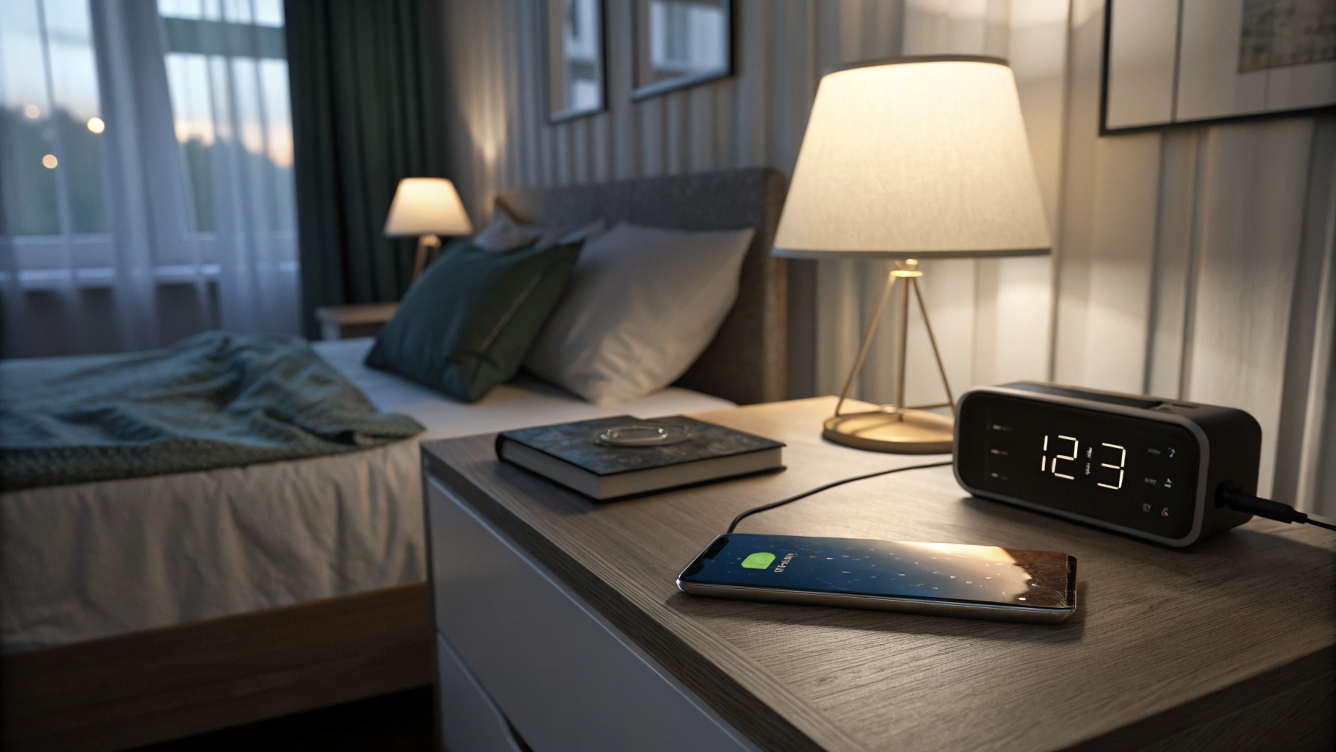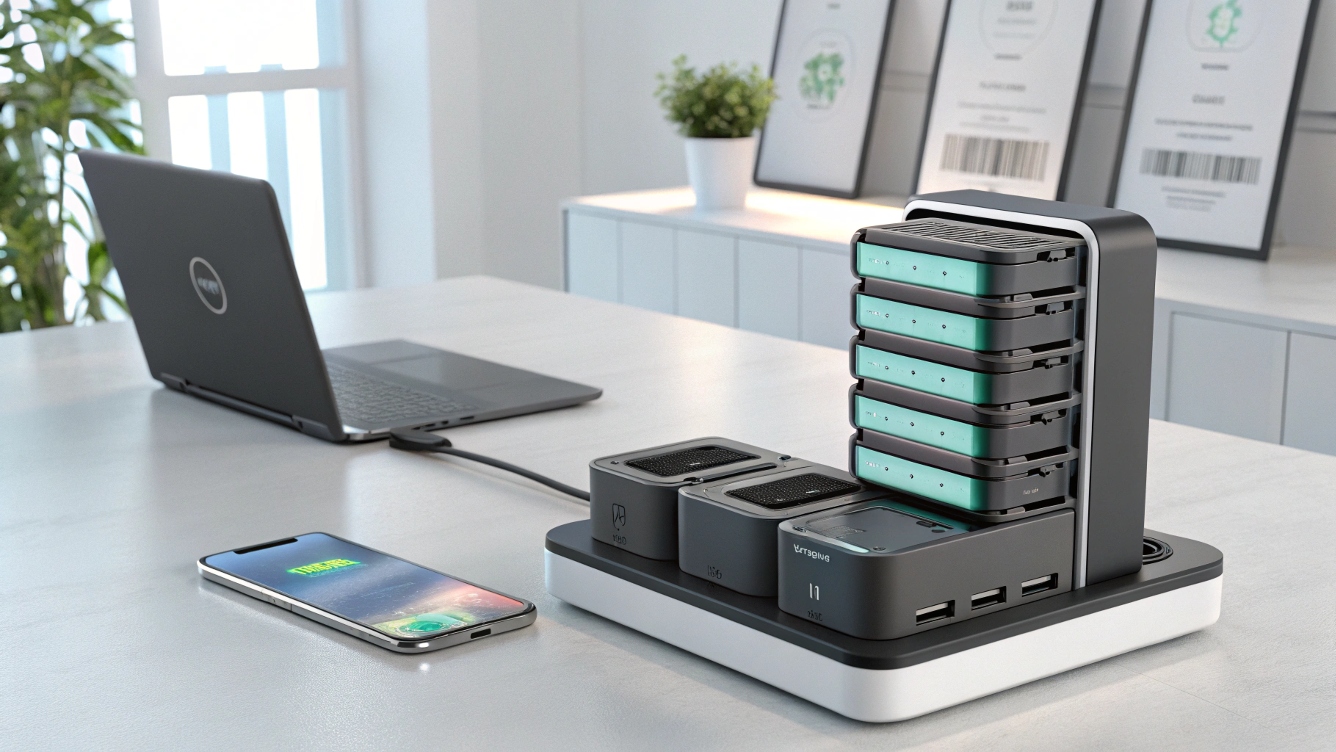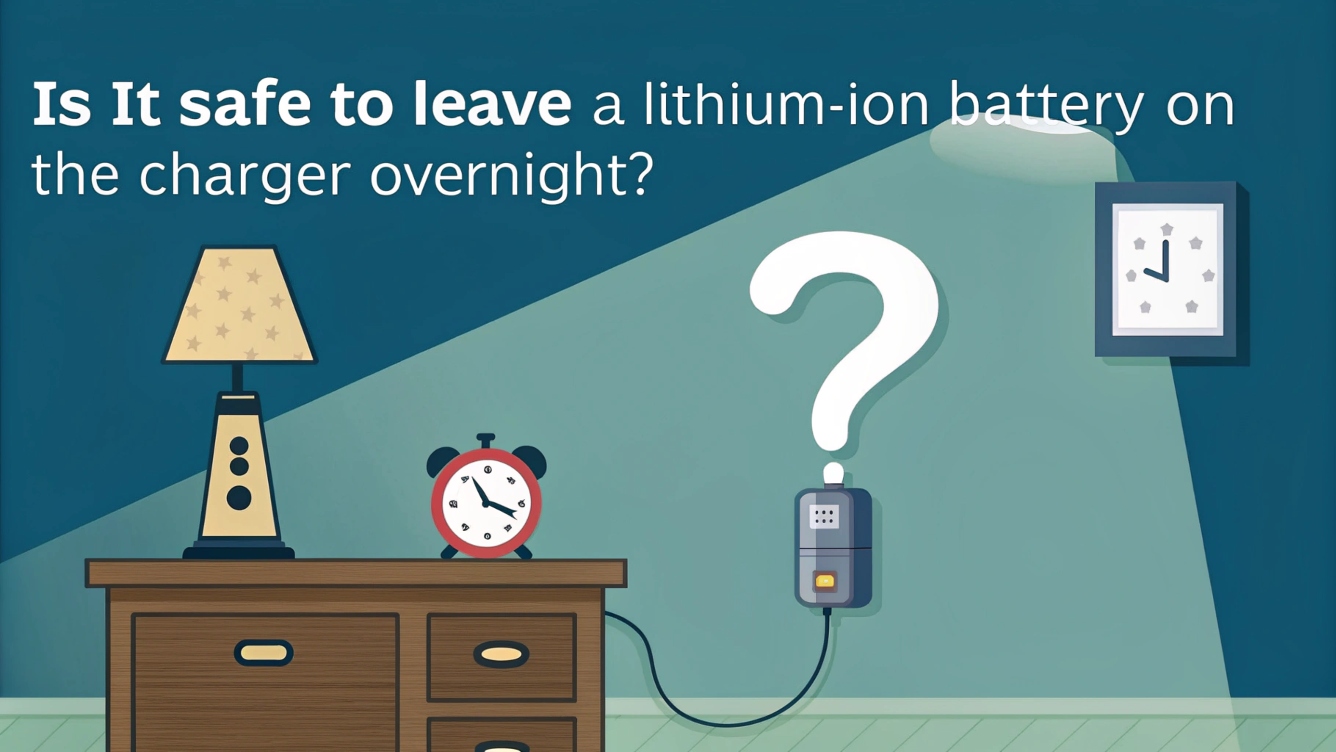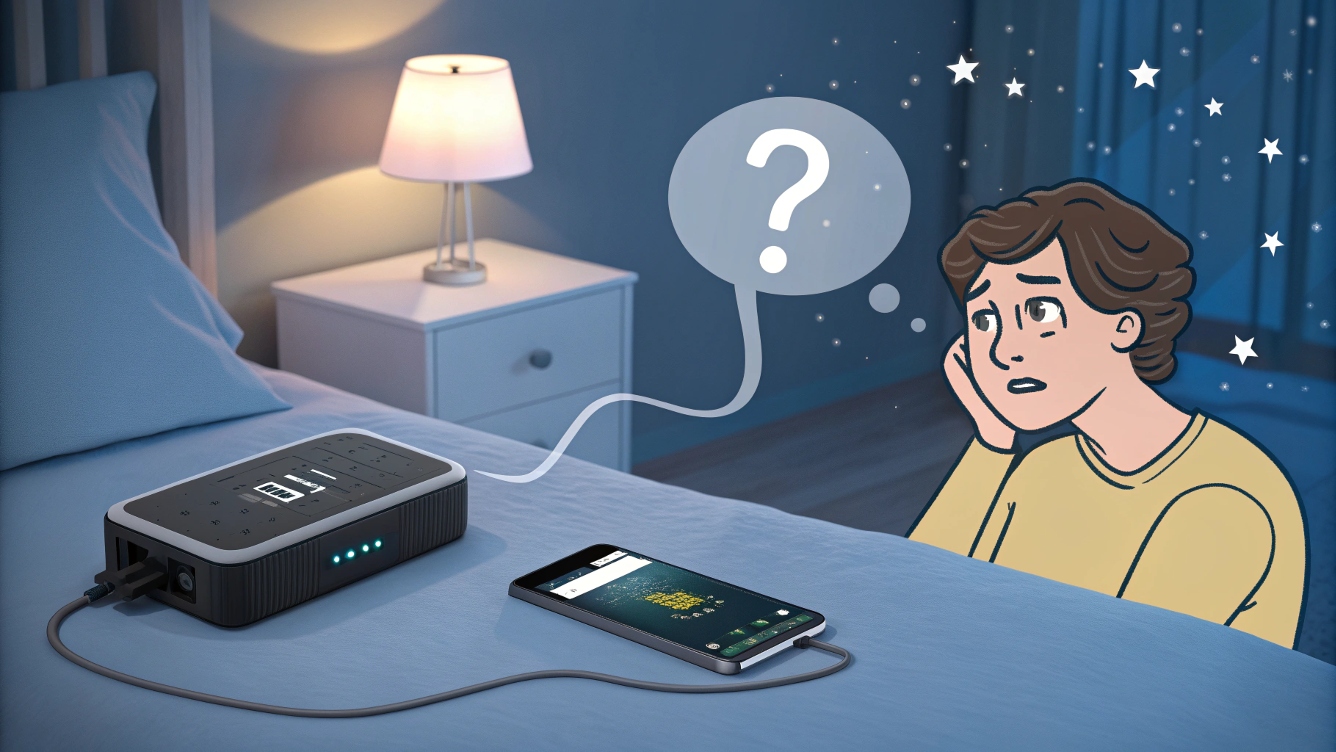충전기에 리튬 이온 배터리를 하룻밤 사이에 두는 것이 안전합니까??
야간 충전의 숨겨진 위험
리튬 이온 배터리를 밤새 충전기에 올려두는 것이 편리해 보일 수도 있습니다., 하지만 마모를 가속화하고 안전 위험을 초래할 수 있습니다.. 이유는 다음과 같습니다:
- 과도한 스트레스: 최신 충전기는 일반적으로 다음 시점에서 충전을 중지합니다. 100%, 하지만 최대 용량을 유지하기 위해 세류 충전을 하면 열이 발생합니다., 시간이 지남에 따라 배터리 성능이 저하됨. 연구에 따르면 완전 충전을 자주 하면 수명이 다음과 같이 단축됩니다. 20-30% 부분 충전과 비교합니다:인용문[2]:인용문[3].
- 열 런 어웨이: 환기가 잘 안되는 곳에서 장시간 충전하면 화재 위험이 높아집니다., 특히 손상되거나 위조된 배터리의 경우. 예를 들어, 부어오른 18650 밤새 충전한 셀은 150°C를 초과하는 온도에 도달할 수 있습니다.:인용문[1]:인용문[4].
- 용량 손실: 리튬이온 셀은 다음 장소에 보관됩니다. 100% 충전으로 인해 매월 최대 5% 용량 손실, ~ 대 2% ~에 50% 요금.
팁: 사용 쌓을 수 있는 리튬 배터리 (배터리 관리 시스템이 내장된 Modular Energy 시리즈와 같습니다. (비엠에스) 자동으로 과충전을 방지하기 위해.
야간 충전이 가능한 경우 (그리고 그렇지 않다) 허용됨
안전한 시나리오
- 스마트 충전기: 자동 차단 기능이 있는 장치 (예를 들어, 아이폰, 테슬라 차량) 안전하게 연결 상태를 유지할 수 있습니다.
- 저전력 장치: 소형 배터리를 사용하는 시계 또는 보청기 (<100mAh) 최소한의 열 발생.
고위험 상황
- 저렴한 충전기: 인증되지 않은 충전기에는 전압 조절이 부족합니다., 과충전 위험.
- 배터리 손상: 부풀어 오르거나 구멍이 난 셀은 절대로 무인 충전을 해서는 안 됩니다.:인용문[1].
- DIY 배터리 팩: 보호되지 않은 셀 (느슨한 18650년대처럼) 열폭주에 취약하다:인용문[4].
5 안전하게 충전하고 배터리 수명을 연장하기 위한 전략
1. 부분 충전 (20-80% 규칙)
유지 20-80% 충전 범위는 화학적 스트레스를 감소시킵니다.. 10kWh의 경우 스택형 배터리 시스템, 이것은 의미합니다:
- 매일 사용: 요금 80% (8kwh usable).
- 백업 모드: 요금 100% 폭풍이나 정전이 발생하기 전에만.
2. 스마트 충전 기술 사용
배터리를 다음과 페어링하세요. MPPT 태양광 충전기 (예를 들어. GYCX 태양광 MPPT) 프로 그:
- 미리 설정된 수준에서 충전을 중지합니다. (예를 들어. 80%).
- 온도에 따라 속도 조정.
3. 온도 제어
- 이상적인 범위: 15°C~25°C에서 충전 (59°F~77°F).
- 극단을 피하십시오: 0°C 미만으로 충전하면 리튬 도금이 발생합니다.; 45°C 이상에서는 분해가 가속화됩니다.:인용문[2].
4. 모듈 식 배터리 시스템
쌓을 수 있는 리튬 배터리 허용하다:
- 개별적인 부담을 줄이기 위해 모듈 전체에 부하를 분산시킵니다..
- 시스템 가동 중지 시간 없이 결함이 있는 장치를 격리합니다..
5. 예약 충전
서늘한 저녁 시간에 충전하도록 타이머를 설정하고 80% 아침까지.
사례 연구: 태양 광 주택 쌓을 수있는 리튬 배터리

우리를 사용하는 텍사스 가족 오프 그리드 태양열 키트 달성:
- 40% 더 긴 수명: 요금을 다음으로 제한하여 85% 프로그래밍 가능한 인버터를 통해.
- 화재 안전: 통풍이 잘되는 곳에 모듈을 보관, 내화 인클로저.
- 에너지 절약: 요구 사항이 증가함에 따라 점진적으로 용량 추가.
비교 분석: 충전 관행
| 관행 | 위험 수준 | 수명에 미치는 영향 | 가장 좋습니다 |
|---|---|---|---|
| 밤새 (똑똑한) | 낮은 | -10% | 인증된 장치 |
| 밤새 (일반적인) | 높은 | -30% | 피하다 |
| 부분 (20-80%) | 없음 | +25% | 매일 사용 |
| 완전방전 | 비판적인 | -50% | 절대 권장하지 않음 |
업계 테스트와 Wikipedia에서 종합된 데이터: 리튬이온 배터리 노화.
미래 방지 모듈형 에너지 저장 장치
업그레이드 쌓을 수 있는 리튬 배터리 제안:
- 확장성: 5kWh로 시작하세요, 수요 증가에 따라 20kWh로 확장.
- 안전: 통합 BMS는 각 모듈의 과열 또는 과충전을 모니터링합니다..
- 능률: 마모를 최소화하기 위해 모듈 전반에 걸쳐 충전 균형을 유지합니다..
팁: AI 기반 에너지 관리자와 결합하여 사용 패턴을 예측하고 충전 일정을 최적화합니다..
자주 묻는 질문: 중요한 우려 사항에 대한 답변
큐: 노트북을 연결해 둘 수 있나요? 24/7?
ㅏ: 예, "배터리 절약 기능이 있는 경우" 충전을 제한하는 모드 80-90%.
큐: 필요한 경우에는 어떻게 하나요? 100% 여행 비용?
ㅏ: 출발 직전에 완전히 충전하세요. 가끔 완전 충전을 해도 피해가 최소화됩니다..
큐: 배터리 건강을 모니터링하려면 어떻게해야합니까??
ㅏ: Bluetooth 지원을 사용하십시오 배터리 모니터 (우리에 포함 프로 시리즈) 전압과 사이클을 추적하기 위해.
결론: 더 스마트하게 충전하세요, 더 이상

가끔씩 밤새 충전해도 배터리가 파괴되지는 않습니다., 습관화하면 수명 단축, 위험 증가. 태양광 사용자 및 기술 애호가용, 쌓을 수 있는 리튬 배터리 스마트 충전 기술과 결합하여 더욱 안전한 서비스 제공, 오래 지속되는 솔루션.
다음 단계:
- 우리를 탐구하십시오 모듈형 배터리 키트 확장 가능한 스토리지 용.
- DIY 팁을 위한 충전 안전 가이드 다운로드.
- 충전주기 최적화에 대한 데모를 시청하십시오.
참조
- 리튬 이온 노화 메커니즘: 위키 백과: 리튬이온 배터리.
- 열 런 어웨이 위험: 위키 백과: 리튬 배터리 화재.
- 충전주기 데이터: Battery University의 업계 보고서.



